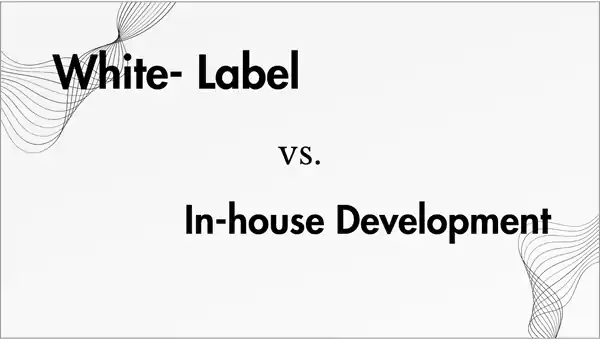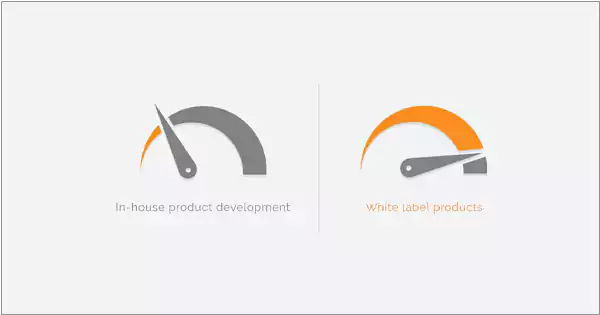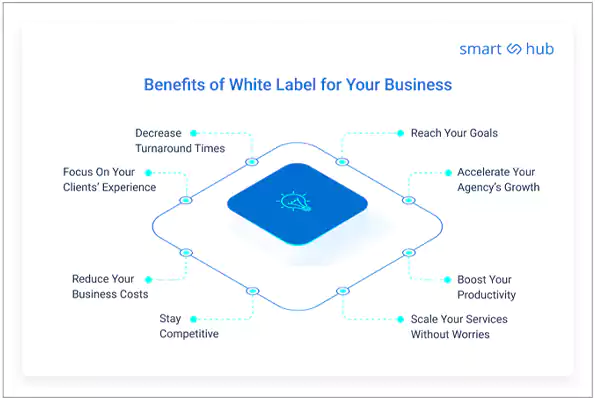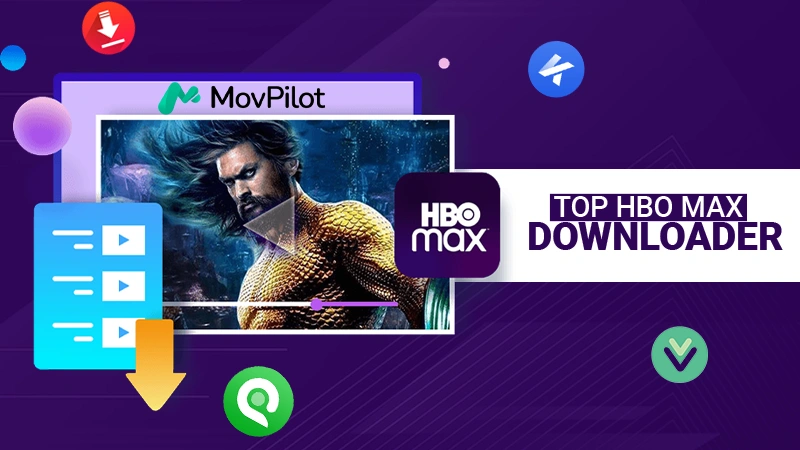
Both the white-label services and in-house development have their perks. And as a business, it gets difficult to opt for one between them. However, to make the decision-making process easy for you, ad exchange solutions can also serve as a possible approach to market a product.
Advertising exchange solutions have emerged to cope with the prevailing digital scenario and requirements. With global ad spending expected to reach $963.5 Billion this year and 4.4% market growth, this topic is worth a debate for companies.
That’s why, we are going to highlight the importance of white-label solutions for ad exchange and see the revolution it brought, into the digital market.
Ad Exchange Solutions: A Digital Jigsaw Puzzle
Looking for an ad exchange solution is confusing you more? If you’re wondering whether you should opt for a white-label platform or an in-house development, your choice should depend on your objective, budget, and resources. Both options have their advantages and consequences. And to make a wise decision, you need to understand both concepts from its core.
What is a White-label Platform?
A white-label platform serves as a third-party service, providing you with a pre-packaged software solution such as Smart Hub. On selecting this option, you can flexibly tailor and rebrand the ad exchange as your own, You will also be able to launch your ad exchange without building it from scratch.
Several other features like adding your own logo, design, or domain name can be utilized on this platform. It will also provide technical support, maintenance, and regular updates.
What is an In-house Development?
You’ll have to create a software solution on your own or hire a team of developers in an in-house development way. Though it’ll give you complete control and flexibility over your ad exchange, it may get heavy on your pocket.
It can also be accommodated with existing software and tools, in-house development needs time and expertise to build and manage.
White-Label vs. In-house Development

These platforms have several advantages over in-house developments, such as:
- Lower cost: You don’t have to invest in hiring developers, buying servers, or paying for licenses. Only pay a monthly or annual fee for using the platform.
- Faster time-to-market: Launch your ad exchange in a matter of days or weeks, instead of months or years.
- Easier management: No need to worry about coding, debugging, or updating your software. The platform provider takes care of everything for you.
- Higher reliability: You can benefit from the platform’s proven technology, security, and compliance standards. You also get access to their network of partners and advertisers.

For more insights on the suitability of white-label solutions for ad exchanges, Forbes offers comprehensive coverage.
Challenges of White-Label Solutions: Customization vs. Convenience
These solutions, regardless of the convenience, may limit the customizability. It’s like decorating a home with a limited furniture selection or renting a furnished apartment – you may have to sacrifice some creative freedom.
Also, relying on third-party providers means entrusting a portion of your business to external vendors, requiring alignment with your values and goals.
On the other hand, in-house developments have some benefits over white-label platforms, such as:
- Greater Customization: You get to tailor your ad exchange to your unique requirements and goals, as well as add new features and functionalities as you grow.
- More Differentiation: Create a distinctive brand identity and value proposition for your ad exchange, and also avoid competing with other users of the same platform.
- More Independence: Own your software and data, and you don’t depend on a third-party provider. You can also switch or modify your solution at any time.
Challenges of In-House Development: The Price of Sovereignty
Creating an in-house ad exchange is like building a grand mansion – a substantial financial and resource investment. It’s a laborious, time-consuming journey, much like constructing a majestic castle.
You need patience and a skilled in-house team. The technical complexity is akin to a demanding cross-country road trip, where expertise serves as your compass.
DID YOU KNOW?
In 2003, Right Media was founded and would become the world’s first ad exchange.
Making Sense of Your Decision: A Roadmap to Clarity
There is no definitive answer to whether white-label or in-house development is better for your ad exchange. It depends on various factors, such as:
- Budget: How much are you willing and able to spend on your ad exchange solution?
- Timeline: How soon do you want to launch your ad exchange?
- Resources: How many people and skills do you have available for your project?
- Objectives: What are you trying to achieve with your ad exchange?
- Expectations: What are the features and functionalities that you require for your ad exchange?
Choosing between white-label and in-house development isn’t one-size-fits-all. It depends on factors like your budget, timeline, resources, objectives, and expectations. A simple framework:
| Decision Framework | Recommendations |
| Low budget, short timeline, limited resources, simple objectives, and basic expectations | Consider a white-label platform. |
| High budget, long timeline, abundant resources, complex objectives, and advanced expectations | In-house development may suit you. |
| In between | Explore hybrid solutions, combining both options, tailored to your needs while benefiting from the efficiency of white-label components. |
Balancing Act: Hybrid Solutions
It is often said that the most effective solutions lie at the intersection of options, a sentiment attributed to Aristotle.
Many businesses choose a hybrid approach, combining the strengths of platforms like Smart Hub with customized features to precisely address their requirements. This approach is akin to crafting a gourmet dish by blending carefully selected ingredients with readily available seasonings.
Developing a hybrid solution enables you to tailor it precisely to your needs while capitalizing on the efficiency and cost-effectiveness of white-label components. For deeper insights into expert opinions and analysis on SmartHub, you can explore valuable resources from Emerald, a recognized authority in industry analysis and expertise.
Conclusion: Crafting Your Digital Odyssey
The choice between white-label and in-house development for ad exchange solutions is not a one-size-fits-all decision. It’s a dynamic process influenced by your specific circumstances and objectives. Embrace this complexity, as it has the potential to shape your future in digital advertising.
As you embark on this journey, keep in mind that the ever-evolving digital advertising industry offers both opportunities and challenges. Being well-informed, adaptable, and attuned to this changing landscape will act as your guiding light.
And, in case you opt for the well-traveled path of white-label solutions or forge your own with in-house development, do so with clarity and determination.







